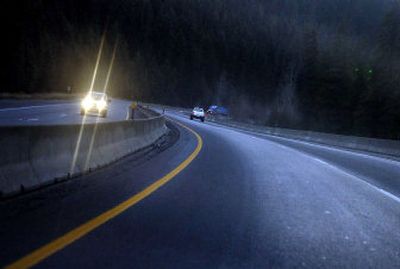Don’t rely on El Niño, experts say

For all the worry over El Niño, the phenomenon that can throw typical winter weather patterns astray, travel experts suggest keeping the tire chains handy and the snow skis waxed up.
And those considering winter forays to the sunny southwestern U.S. should still take sunscreen even though the latest government weather maps show greater risk of wet months ahead.
“It’s a tough call to make, predicting weather,” said Dave Walker, marketing director for Carlson Wagonlit Travel. He doesn’t understand the fuss and advises travelers looking for sun and snow the same as he would in any other year: “You don’t want to say, ‘Don’t go,’ and have someone else say, ‘Man that was the best snow ever.’ “
El Niño means “the baby” because of its association with Christmas. It could just as soon be because of the way it sends traditional weather systems into tantrums, flipping wet weather typically destined for the north to the south and shifting warm, dry air north.
But then again, the buildup may be worse than the actual event.
Transportation officials certainly don’t make any assumptions about how it will affect their work on Washington and Idaho mountain passes. Each winter season is approached like any other, with expectations that snow will need to be cleared.
Idaho Transportation Department districts plan their season based on average conditions, said department spokesman Jeff Stratten.
Predictions don’t always pan out, said Washington State Department of Transportation spokesman Mike Westbay. There can be other complications even if El Niño does decrease precipitation.
“Just because it doesn’t snow as much, it can instead frost a lot,” Westbay said. That may mean that crews end up shifting work from snowplowing to clearing the freeway at Snoqualmie Pass of ice.
“El Niño doesn’t really mean that the passes are going to be any better or worse, but it certainly means that the low elevations you’re going to have to traverse are going to have less snow,” said John Livingston, the meteorologist in charge of the National Weather Service’s Spokane station.
There is a good chance this winter of less snowfall in the Spokane and Coeur d’Alene areas, but it’s not a certainty, Livingston said.
And while average temperatures over the season will probably be a degree or two higher, it’s impossible to predict what that might mean for any given day or week, he added.
Hardly the sort of talk that makes Inland Northwest residents rush for winter shorts, or that sends local ski hill operators scurrying for antacids.
Skiing conditions could be great here this year, said Phil Edholm, owner of Lookout Pass.
Even if the snow doesn’t bury all of Eastern Washington and North Idaho, Edholm said he’s not worried about Lookout.
It tends to get more snow than other local ski resorts he said.
The last El Niño winter delivered Edholm his second best season on record.